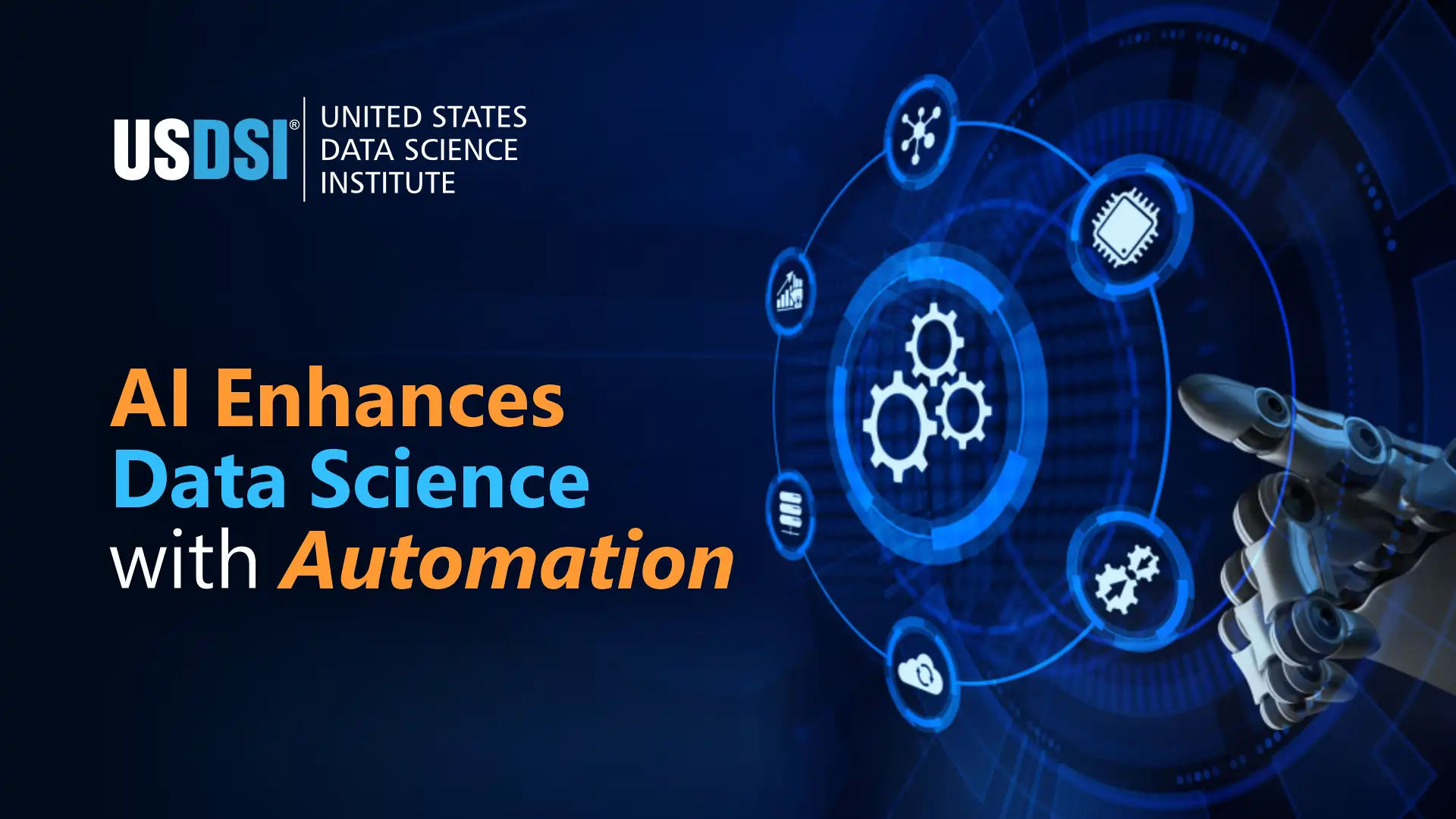
Artificial Intelligence (AI) is a revolutionary technology, and organizations across all industries are actively adopting AI to transform their businesses. AI offers highly powerful automation capabilities that are beneficial for businesses, as they can help increase productivity and enhance their efficiency and accuracy.
The biggest advantage of using AI is that it can free up professionals’ time to work on more strategic and innovative tasks.
Today, the amount of data generated is increasing rapidly. The traditional methods of handling such a huge amount of data is no longer efficient to get faster insights and make impactfull decisions in real time.
Organizations can implement data science automation using the advanced tools that can assist with data processing, model building, analysis, and other tasks to assist data scientists do their work more efficiently and focus on more strategic work.
In this article, let us explore in detail how AI can be used to automate and streamline data science workflows and where you can use these tools for maximum benefit.
1. Automating Data Preparation
Preparing data is one of the most essential tasks in the data science process. It involves collecting the right data, data cleaning, and data pre-processing to convert raw data into a structured and usable format.
By nature, you can understand how clumsy, time taking, and complex this task can be for data engineers. However, with the right AI tools, this can be easily automated.
Data Cleaning and Preprocessing Automation Tools
Different kinds of tools can be used to automate data cleaning and preprocessing tasks that can handle the following tasks:
Using the right tools, you can automate these tasks and make data cleaning effortless.
Data Preparation Automation Advantages
Automation of data preparation reduces time spent on redundant and repetitive data cleaning tasks, which helps data scientists to focus on analysis and insights from data. Automation also improves accuracy and is often error-free. Thus, data science professionals can get consistent results.
2. Automated Model Building
Machine learning models identify patterns and generate predictions from data. But building such models can be a time-consuming and complex task that requires significant data science skills and expertise.
So, using automation tools for model-building processes, organizations can easily address this issue and streamline their data science workflows. This will make machine learning solutions easier and faster to deploy.
Machine Learning Framework for Automating Model Creation
The process of automating model building requires different machine-learning frameworks and tools. This collection of these tools and frameworks is called AutoML, which is handled via different AutoML platforms. The tools can help with many tasks, from feature selection to algorithm selection and hyperparameter tuning.
Advantages and Limitations of Automating Model Creation
There are several benefits of automated model building, such as faster model creation, ease of use, and effective handling of complex data. This process also simplifies the process through which data science professionals can build accurate models without manual tuning.
But automation can sometimes ignore the nuances in datasets and suffer lack of transparency and give rise to a “black box” issue. Therefore, it becomes essential to choose the right tools with explainability features.
3. Automating Model Deployment
After selecting the right model, you need to deploy it to the production environment and integrate it into the existing IT infrastructure.
Deployment Automation Strategies
Numerous platforms and strategies are available to help you automate data science processes and model deployment. These tools allow deployment of your model output directly into various business systems you are already using.
Automated Model Deployment Best Practices
For successful automated model deployment, clearly define your goals and ensure strong collaboration between data and IT teams. Post-deployment, regularly monitor model performance to quickly detect and resolve any issues.
Steps for Successful Data Science Automation
To automate your data science workflow, it is wise to consider the following points for effective results:
Conclusion
As technology is advancing rapidly, using AI for data science automation has become increasingly important to stay relevant and competitive in the industry. Innovations in AI, machine learning, and cloud computing are also making automation tools more powerful and user-friendly.
As we move toward the future, we will see even greater adoption of AI and other automated workflows across all industries for managing large amounts of data quickly and effectively. Also, the rise of explainable AI (XAI) will help organizations tackle the ‘black box’ issue properly and make automated systems more transparent and trustworthy.
Therefore, to stay competitive, organizations need to keep up with emerging trends and invest in training their data science teams and encourage responsible and ethical data practices in their automation strategies for the best results.
This website uses cookies to enhance website functionalities and improve your online experience. By clicking Accept or continue browsing this website, you agree to our use of cookies as outlined in our privacy policy.